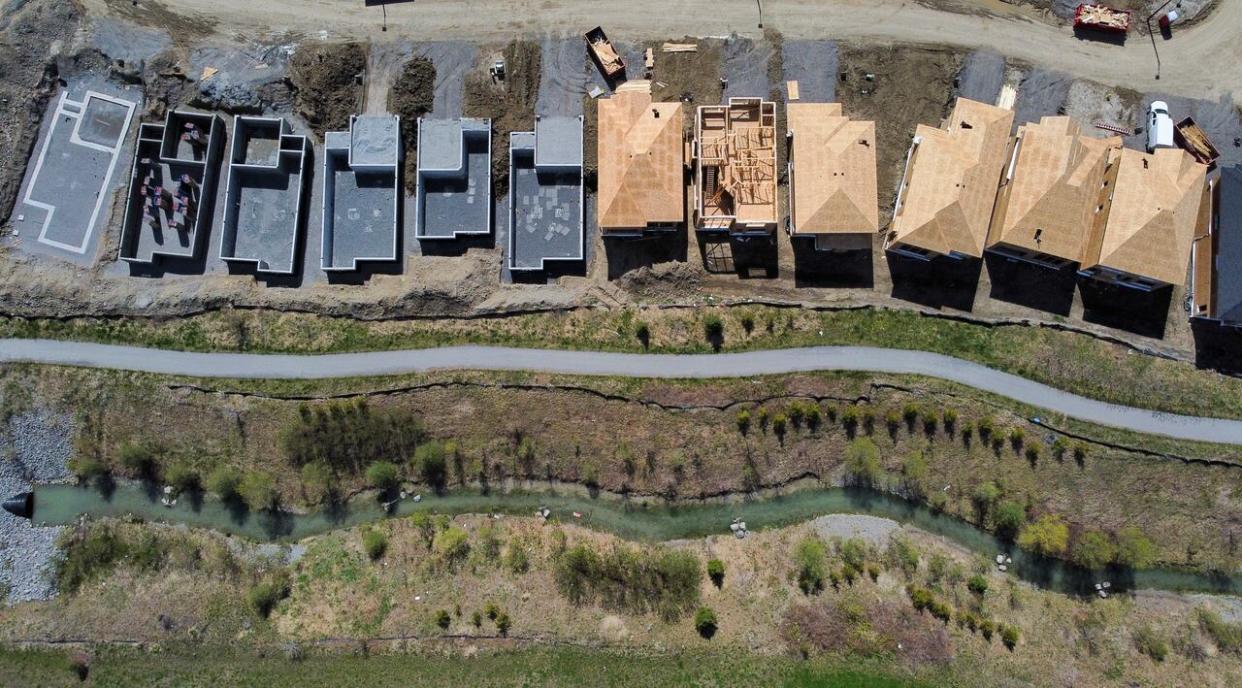Ottawa's new draft zoning bylaw has dropped. Here's what's new

City staff want to allow two-and-a-half-storey homes across Ottawa, make it easier to build additions to heritage properties and tighten rules limiting how many parking spaces developers can build near transit stations.
While information about Ottawa's new draft zoning bylaw has been coming out in dribs and drabs, the full text — which includes those three recommendations — is now open for review.
It comes with a detailed map that allows residents to visualize how their neighbourhood could change if and when the bylaw passes.
Planning staff have already signalled a major shift on parking, as they aim to provide "parking choice" to developers by eliminating rules that force them to build a minimum number of spaces per housing unit.
But there are also rules that prevent developers from building too much parking near major transit stations, and they aren't going away. In some areas, they're set to get stricter.
Within 600 metres of existing or planned rapid transit stations, the limit would fall from 1.5 parking spaces per unit to just one in the downtown. In other core neighbourhoods, it would drop from 1.75 spaces per unit to 1.25.
Carol Ruddy, the city's program manager of zoning and intensification, called that "a difficult decision" and said she wants to hear what people think.
"We wanted to come out with something that was progressive, and we wanted to test it and see if we've gone too far," she said.
But she said there's one point where the rules will get looser. They previously applied to all planned major transit stations, even those with no funding slated for Stage 3 of light rail.
In the new draft, they would only apply to stations planned in the next decade.
Less visitor parking, more bike parking
The draft bylaw still has minimum rules for visitor parking, but they're looser than the current policy.
In the suburbs, developers currently have to build one visitor parking space for every five housing units. The draft would drop that to one for every 10, the standard that now exists for the central city.
There would also be more generous exceptions, with no visitor parking required for the first 12 or 24 units in many areas.
When it comes to bike parking, staff want to go in the opposite direction, pushing developers to provide more spaces in their buildings — including easy-access, short-term spots for visitors — to promote cycling.
For smaller apartment buildings, the required number of bike spaces would essentially double.

Carol Ruddy is the city's program manager of zoning and intensification. (Stu Mills/CBC)
Ruddy said those shifts recognize that the way people get around in the city is "evolving," while still aiming to strike a balance with the continued use of the automobile.
"I don't want to ever give the impression that in zoning we're trying to do something to get rid of cars," she said. "That's not at all what the direction is with these provisions or of this bylaw."
But, in many ways, the draft bylaw does try to push cars further out of public view. There are, for example, stricter rules to shield drive-thrus and parking lots if they're adjacent to a residential area.
Two-and-a-half storeys everywhere
At first glance, the draft bylaw makes only a modest boost to building height limits in low-rise residential neighbourhoods.
In the two lowest density zones, they're set to rise just 50 centimetres to 8.5 metres, still about two storeys.
But the full text of the bylaw adds a notable exception. The tip of a sloping roof can extend higher, to as much as 11 metres, depending on its slope.
That already applies in Westboro, but the new bylaw would extend it across the entire city.
"The intent is to allow a third story where you have those dormers," said Ruddy, referring to window-shaped boxes that protrude from a sloping roof.
"That reduces the size of that roof that's going up beyond the second storey and that kind of reduces the visual impact of that third story."
Even with a flat roof, homes can rise to 11 metres so long as the top storey takes up less than half the floor space of the building below.
Ruddy explained that there's already a hodgepodge of height rules in low-density residential neighbourhoods, with many exemptions to the standard two-storey limit.
Those will be carried forward in the new draft.
Zoning to stay 'in its own lane' on heritage
The existing zoning bylaw essentially freezes heritage properties, something else that could change.
Additions can't go on front yards or poke over roofs, and there are even more restrictive rules in the centre city, which hosts most of the city's heritage buildings.
All those rules have disappeared from the new draft.
"The heritage overlay in the current zoning bylaw shrink-wraps a building to the existing size and location," said Ruddy.
That doesn't mean heritage protections are gone. The Ontario Heritage Act will still require owners to get committee approval for alterations, but Ruddy confirmed that removing the added burden of zoning restrictions will make it easier.
"We're really trying to keep zoning in its own lane here," Ruddy said.


